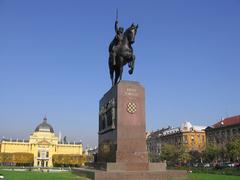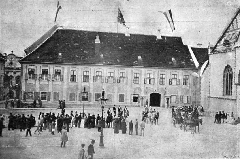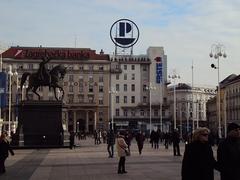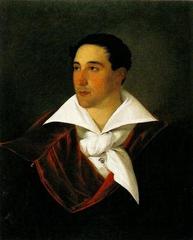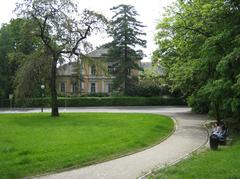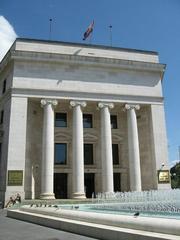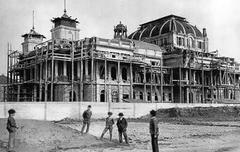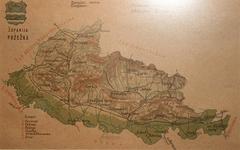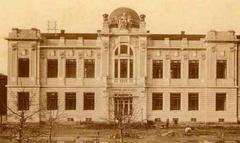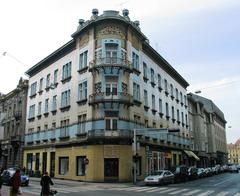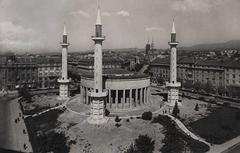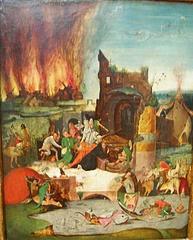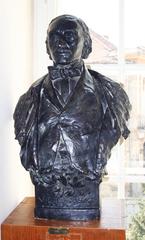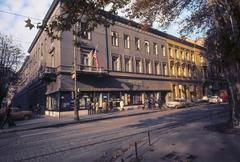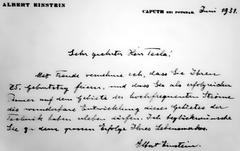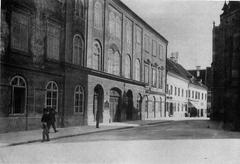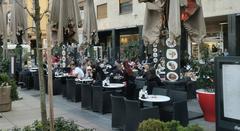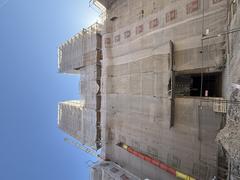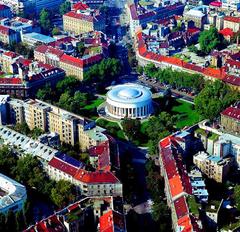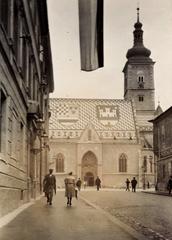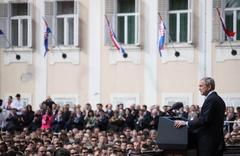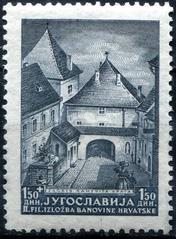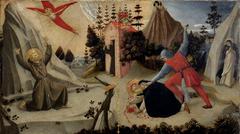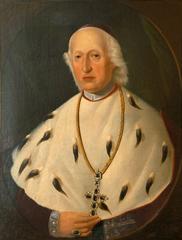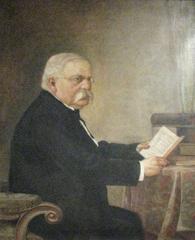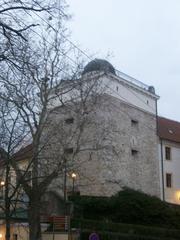Kulmer Castle Zagreb, Croatia: Visiting Hours, Tickets, and Historical Guide
Date: 14/06/2025
Introduction
Nestled in Zagreb’s scenic Šestine district at the foot of Medvednica Mountain, Kulmer Castle (Kulmerovi dvori) stands as a compelling symbol of Croatian aristocratic heritage and architectural evolution. Tracing its origins to the late 16th century, the castle has witnessed centuries of noble stewardship—from the Zrinski family to the influential Kulmers—each leaving a distinct architectural and cultural imprint. Despite the challenges of the 20th century, including war, nationalization, and neglect, Kulmer Castle has endured through significant restoration, embodying both historical resilience and artistic grandeur.
Though privately owned and not open for regular public tours, Kulmer Castle’s stately exterior and picturesque setting continue to attract history, architecture, and culture enthusiasts. This guide offers a comprehensive look into the castle’s history, architectural features, visiting possibilities, nearby attractions, and practical visitor information. For the most current updates, consult official channels and Zagreb’s heritage portals. (PP Medvednica; Zagreb Info; Rough Guides)
Table of Contents
- Introduction
- Historical Overview
- Architectural Features and Legacy
- Visitor Information: Hours, Tickets, Accessibility
- Nearby Attractions
- Tips for Visiting
- Frequently Asked Questions (FAQ)
- Conclusion
- References
Historical Overview
Origins and Early Development
Kulmer Castle’s history begins in the aftermath of the 1590 earthquake, when Stjepko Gregorijanec founded a fortified manor at the base of Medvednica Mountain. Its strategic location provided defense and oversight, a hallmark of noble estates from the period (PP Medvednica; hr.wikipedia).
Noble Ownership and Architectural Evolution
Over the centuries, the castle changed hands among several noble families. The Zrinski family expanded it in the Renaissance style, while subsequent owners—including the Turovicz, Mikulić, Čikulin, and Sermage families—added Baroque and other period features. The most transformative era began with the Kulmer family in the 17th century, who undertook major neo-Renaissance renovations and expanded the estate (Wikipedia: House of Kulmer; hr.wikipedia).
20th Century Upheaval and Decline
After World War II, Kulmer Castle was nationalized under Yugoslavia, suffering damage from fire and ammunition explosions. The estate was later used as a gardening school, disco, and restaurant, before falling into disrepair (Around Zagreb).
Restoration and Modern Status
Following Croatia’s independence, the castle was privatized and underwent extensive restoration in the late 1990s. Today, it stands as Zagreb’s only fully preserved and arranged castle, though it remains closed to daily public access (hr.wikipedia; PP Medvednica).
Architectural Features and Legacy
Kulmer Castle represents a harmonious blend of Renaissance, Baroque, and neo-Renaissance styles. The exterior’s symmetry and ornate facades showcase centuries of enhancement, while the landscaped English-style park, ornamental ponds, and mature trees add to its romantic appeal. Inside, features such as the grand staircase, stucco ceilings, and period fireplaces reflect the craftsmanship and tastes of Central European nobility (hr.wikipedia).
Artistic highlights include 19th-century frescoes, decorative medallions, and heraldic motifs tied to the Kulmer family. Restoration efforts have revived the castle’s original ambiance with antique furnishings and period details (Zagreb Info).
Visitor Information
Visiting Hours and Tickets
Current Status:
Kulmer Castle is not open to the general public for daily tours. Access is typically limited to special cultural events, private functions (such as weddings or corporate gatherings), or by prior arrangement for group visits.
- Public access: Possible during select events or with advanced booking.
- Event access: Tickets (usually €10–€20) are sold in advance or at the venue during events.
- Guided tours: Available by prior arrangement for groups; may include in-depth historical and architectural insights.
- Contact for details: Kulmer Castle Official Site, [email protected], +385 (0)1 1234 567
Getting There
- Address: Kulmerova 35, 10000 Zagreb, Croatia
- By car: 8–10 km north from Zagreb’s center, with on-site parking.
- By public transport: City buses to Šestine, followed by a short taxi ride or uphill walk. Tram and bus combinations are also possible.
- Cycling: Possible but challenging due to steep terrain.
Accessibility
- Mobility: Ground-level areas are generally accessible; upper floors may have limited wheelchair access due to the castle’s historic design.
- Assistance: Contact in advance for specific accessibility needs.
Facilities and Services
- Restrooms: Modern facilities available during events.
- Catering: On-site only during special functions.
- Languages: Staff and guides typically speak Croatian and English.
Photography
- Policy: Permitted outdoors and during events; indoor photography may be restricted to protect artworks and furnishings.
Nearby Attractions
Make the most of your trip by exploring these sites:
- Medvedgrad Fortress: A medieval fortress with panoramic views.
- Medvednica Nature Park: Hiking and nature trails.
- Šestine village: Traditional architecture, local cuisine, and folklore.
Tips for Visitors
- Plan ahead: Always check the official website or contact the venue before your visit.
- Dress code: Smart attire for formal events; comfortable shoes for tours.
- Weather: The area can be cooler and wetter than central Zagreb—dress accordingly.
- Group visits: Available by advance arrangement.
- Children: Welcome at public events with supervision.
- Pets: Only service animals allowed inside.
Frequently Asked Questions (FAQ)
Q: Can I tour Kulmer Castle every day?
A: No, regular public tours are not available. Access is limited to events or prior arrangement.
Q: How much are tickets?
A: Tickets for events or group tours typically range from €10–€20 per person.
Q: Is Kulmer Castle wheelchair accessible?
A: Ground floors are partially accessible; upper floors may not be. Contact the venue for details.
Q: Are there guided tours in English?
A: Yes, by prior arrangement.
Q: Is parking available?
A: Yes, on-site parking is provided, with spaces varying by event.
Q: Can I book the castle for private events?
A: Yes, it is a popular venue for weddings, banquets, and corporate functions.
Conclusion
Kulmer Castle is a testament to Zagreb’s aristocratic legacy, architectural splendor, and cultural resilience. While its private status limits daily public access, visitors can participate in special events, guided tours, or admire its artistry from the grounds. Located in the picturesque Medvednica foothills and near other historic sites, Kulmer Castle is an essential stop for those seeking to understand Croatia’s layered history. Always consult the official site or Zagreb Tourist Board for the latest visitor information.
Enhance your visit with the Audiala app for guided audio tours and interactive maps. Follow us on social media for updates, travel tips, and more on Croatia’s cultural treasures.
Resources and References
- PP Medvednica: Castles and Manors
- Zagreb Info: Kulmerovi Dvorci
- Rough Guides: Zagreb
- Kulmer Castle Official Site
- National Museum of Modern Art: Ferdinand Kulmer Exhibit
- Zagreb Tourist Board

